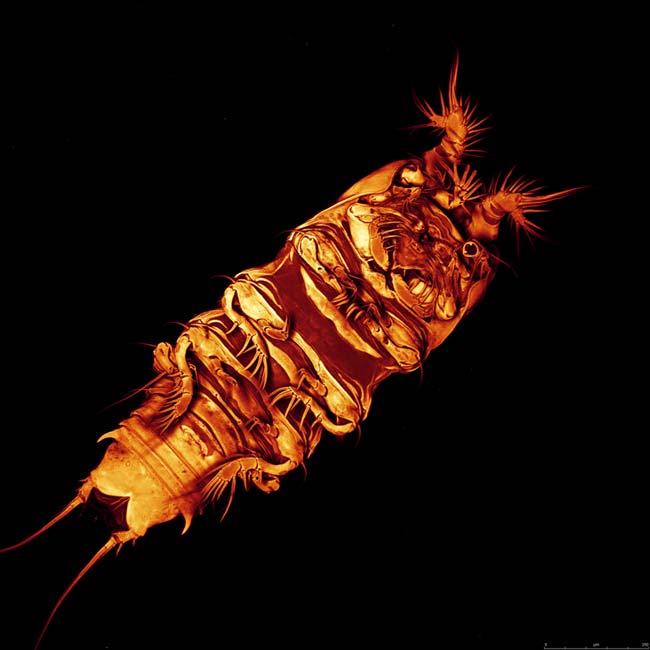Thousands of Strange Sea Creatures Discovered

The deep sea is teeming with thousands of species that have never known sunlight, explorers now say.
Revealed via cameras towed deep in the sea, sonar and other technologies, a stunning 17,650 species are now known to thrive in an eternal watery darkness. This menagerie of weird creatures, ranging from crabs to shrimp to worms, somehow manage a living in a frigid black world down to roughly 3 miles (5 km) below the ocean waves.
Most of these creatures have adapted to diets based on meager droppings from the sunlit layer above, while others live on sulfur and methane, or bacteria that break down oil, or the sunken bones of dead whales and other implausible foods.
Scientists have inventoried about 17,650 species deeper than 656 feet (200 meters), the edge of darkness, where sunlight no longer penetrates. This number includes some 5,722 species recorded deeper than the black abyss of 3,280 feet (1,000 meters).
"Typically the deep sea is viewed as something beyond concern, a pit, a desert, a wasteland, but what we have found in our work is that there is an incredible diversity of species there, often with striking adaptations that we as yet don't understand yet," researcher Robert Carney of Louisiana State University, co-leader of the Continental Margin Ecosystems on a Worldwide Scale project, told LiveScience.
Tales from the deep
During their voyages, all part of the decade-long Census of Marine Life project involving thousands of scientists from around the world, explorers discovered a diverse collection of species.
Get the world’s most fascinating discoveries delivered straight to your inbox.
JUMBO DUMBO: A very large specimen of a rare primitive finned octopod — nicknamed "Dumbos" because they flap a pair of large ear-like fins to swim, like the cartoon flying elephant — was discovered at roughly 3,280 to 9,840 feet (1,000 to 3,000 meters) during a 2009 voyage to the Mid-Atlantic Ridge led by Michael Vecchione, director of the National Oceanic and Atmospheric Administration's Fisheries National Systematics Lab at the Smithsonian. The jumbo Dumbo was estimated to be about six feet long (2 meters) and, at roughly 13 lbs. (6 kg), the largest of only a few specimens of the species ever obtained. Altogether, nine species of gelatinous "Dumbos" were collected on the Mid-Atlantic Ridge, including one that may be new to science. Scientists were surprised to find such a plentiful and diverse assemblage of these animals, which rank among the largest in the deep sea.
OIL WORM: After a robotic arm lifted a solitary worm from a hole in the floor of the Gulf of Mexico in what looked like ordinary surroundings, crude oil streamed from both the animal and the open hole. The "wildcat" tubeworm had hit a gusher and was dining on chemicals from decomposing oil, a find made at 3,250 feet (990 meters) at a 2007 voyage.
SEE-THROUGH CUCUMBER: An odd transparent sea cucumber, Enypniastes, was seen creeping forward on its many tentacles at about 3/4 inch (2 cm) per minute while sweeping detritus-rich sediment into its mouth. At the end, it bloomed into a startling curved shape and swam away to find another meal, which scientists recorded on video at roughly 1.7 miles deep (2,750 meters) on a 2007 voyage in the Northern Gulf of Mexico.
YETI CRAB: The "yeti crabs" — crabs with furry claws that resemble stories of the yeti, or abominable snowman — were discovered in 2005 south of Easter Island in the South Pacific, living on hydrothermal vents at a depth of roughly 7,200 feet (2,200 meters) along the Pacific-Antarctic Ridge by researchers affiliated with the Biogeography of Deep-Water Chemosynthetic Ecosystems project. "Presumably their furry claws are farming spaces for microbes," Carney explained.
WHALE BONE EATER: The Antarctic's first recorded whalebone-eating worm, Osedax, was discovered on at roughly 1,640 feet (500 meters) during a 2009 voyage to a range of New Zealand seamounts. Scientists attached whalebone snacks to two vehicles and parked them 1800 and 2060 feet (550 and 630 meters) deep near Smith Island by the West Antarctic Peninsula. When they raised the parked vehicles 14 months later, they found new species of Osedax they crowded onto the parked vehicles. Seventeen species had been reported on other fallen whales in such places as the shallow northeast Atlantic off Sweden, the northeast Pacific off California and the northwest Pacific off Japan. A mat of chemosynthetic microbial fauna and the small marine worm Ophryotrocha, which eats bacterial mats, also covered the parked vehicles.
Startling diversity
Scientists said the work is expensive and dangerous (read more about the voyage here), but the diversity of creatures has proven startling.
The deep sea "is the Earth's largest continuous ecosystem and largest habitat for life. It is also the least studied," said researcher Chris German of Woods Hole Oceanographic Institution, co-chair of Biogeography of Deep-Water Chemosynthetic Systems project.
A sample of sediment yields more new species than known species, researchers said. And interest in the newfound creatures goes beyond pure scientific marvel.
"There's a lot of interest in bioprospecting there — pharmaceutical companies are really very interested in what deep-sea fauna have to offer, as they often produce unusual compounds," explained Paul Snelgrove, an oceanographer from Memorial University of Newfoundland in Canada.
Climate change, changes in ocean acidity, and "evidence of pollutants creeping deeper and deeper into the ocean" are all ways in which the newfound deep-sea creatures could be vulnerable to human-induced changes, Snelgrove and other researchers said.
- Gallery: Rich Life Under the Sea
- Dangers in the Deep: 10 Scariest Sea Creatures
- Gallery: Small Sea Monsters



